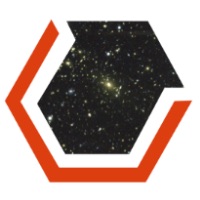
Back مسح الطاقة المظلمة Arabic Dark Energy Survey German Dark Energy Survey Spanish بررسی انرژی تاریک Persian Dark Energy Survey French Dark Energy Survey Galician Dark Energy Survey Italian Dark Energy Survey Portuguese Dark Energy Survey Russian Dark Energy Survey Ukrainian
 Dark Energy Survey logo | |
| Alternative names | DES |
|---|---|
| Website | www |
| | |
| Part of a series on |
| Physical cosmology |
|---|
The Dark Energy Survey (DES) is an astronomical survey designed to constrain the properties of dark energy. It uses images taken in the near-ultraviolet, visible, and near-infrared to measure the expansion of the universe using Type Ia supernovae, baryon acoustic oscillations, the number of galaxy clusters, and weak gravitational lensing.[1] The collaboration is composed of research institutions and universities from the United States,[2] Australia, Brazil,[3] the United Kingdom, Germany, Spain, and Switzerland. The collaboration is divided into several scientific working groups. The director of DES is Josh Frieman.[4]
The DES began by developing and building Dark Energy Camera (DECam), an instrument designed specifically for the survey.[5] This camera has a wide field of view and high sensitivity, particularly in the red part of the visible spectrum and in the near infrared.[6] Observations were performed with DECam mounted on the 4-meter Víctor M. Blanco Telescope, located at the Cerro Tololo Inter-American Observatory (CTIO) in Chile.[6] Observing sessions ran from 2013 to 2019; as of 2021[update] the DES collaboration has published results from the first three years of the survey.[7]
- ^ "Home". The Dark Energy Survey.
- ^ DES Collaboration Page, DES Collaborators.
- ^ DES-Brazil Archived 2014-10-22 at the Wayback Machine, DES-Brazil Consortium.
- ^ "The Dark Energy Survey Collaboration". www.darkenergysurvey.org. Retrieved 2015-11-21.
- ^ The Project - The Dark Energy Survey Collaboration, The DES Project Site.
- ^ a b Dark Energy Camera (DECam) Archived 2019-05-23 at the Wayback Machine, Cerro Tololo Inter-American Observatory.
- ^ "DES Year 3 Cosmology Results: Papers". The Dark Energy Survey. Retrieved 3 August 2021.
© MMXXIII Rich X Search. We shall prevail. All rights reserved. Rich X Search